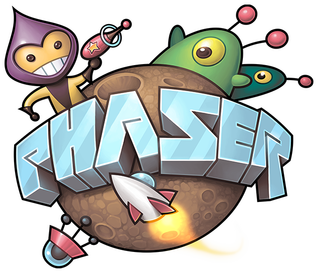Phaser is a great HTML5 game framework that can leverage much of the ecosystem around developing web applications.
One of the core pieces of web apps is the UI and there is no shortage of UI frameworks you can use.
In this article, we will look at using Bulma to power buttons in a Phaser game.
JSX will be used to let us write HTML in our code. Doing so better matches how CSS frameworks are used and makes the HTML easier to reason about.
The examples in this article assumes using the phaser3-parcel-template and TypeScript.
Using JSX without React
JSX lets you write HTML that gets transpiled into the corresponding JavaScript code. It is largely associated with the React project but we can use it without React.
First, install the jsx-dom library that will convert JSX to DOM elements instead of React components.
npm install --save jsx-dom
Next, we have to add a shim for React.createElement using jsx-dom as Parcel assumes we are making a React app and doesn't expose a way to use a different JSX factory–at least I didn't find a way 😅.
Add this code to a file named jsx-dom-shim.ts or similar.
|
|
Then include this file as another entry point above main.ts in your index.html. This will ensure React properly exists in the global namespace before our code runs.
|
|
Creating a JSX Button
We will be using Bulma and Material Design Icons so add their respective CDN distributions to the <head> of your index.html.
<link rel="stylesheet" href="//cdn.jsdelivr.net/npm/bulma@0.8.0/css/bulma.min.css">
<link rel="stylesheet" href="//cdn.materialdesignicons.com/4.4.95/css/materialdesignicons.min.css">
You can also use Bootstrap and FontAwesome or any combination of CSS + Icon framework.
Any JSX code should use the .jsx or .tsx extension.
Create a file named ButtonJSX.jsx and add this JSX button code:
|
|
All the HTML surrounded by parentheses will be transpiled to JavaScript. An HTMLElement instance will be given to us when we import this in another file.
Leveraging CSS frameworks allow us to write a lot less code to create and style a button.
One caveat to consider is that all elements created from CSS frameworks will render above your game. There is no way to layer them between Phaser GameObjects.
Using ButtonJSX in a Scene
The Phaser.GameObjects.DOMElement class lets us create a GameObject from any HTMLElement.
The resulting DOMElement instance can be then be positioned, scaled, rotated, and generally used like any other GameObject.
But before we can use this.add.dom() to add DOMElements to our Scene we need to turn it on in our game config.
|
|
Notice line 3 where we set parent: 'phaser'. We need to specify the id of the element for Phaser to render into or it will not create a DOM container as specified by line 6.
We can add a div to our index.html like this:
|
|
Now we can use this.add.dom() to create our button.
|
|
The general setup should look similar to our previous two articles on buttons: Basic Button and Container Button.
We import our JSX button on line 3 as buttonJsx and then use this.add.dom() to create it on line 24.
Then we attach a listener to the native click event on line 25.
Notice the call to button.addListener(). This adds the native DOM click event to Phaser's event system so that we can use it with on() like other GameObjects.
Run the Scene and it should look something like this:
Next Steps
There are many CSS frameworks you can use to add UI controls with just a few lines of code!
Anything from radio buttons to tabs! The web UI ecosystem is your oyster.
We did not use RxJS like we had previously but setting that up should be fairly straight forward using the examples from Basic Button and Container Button.
Let us know in the comments below if anything doesn’t work or is unclear. We’ll be happy to fix or clarify!
Be sure to sign up for our newsletter so you don’t miss any game making power-ups. Drop your email in the box below!
Don't miss any Phaser 3 game development content
Subscribers get exclusive tips & techniques not found on the blog!
Join our newsletter. It's free. We don't spam. Spamming is for jerks.

We’ll be creating more Phaser 3 tutorials so let us know if there’s anything you’d like to see!